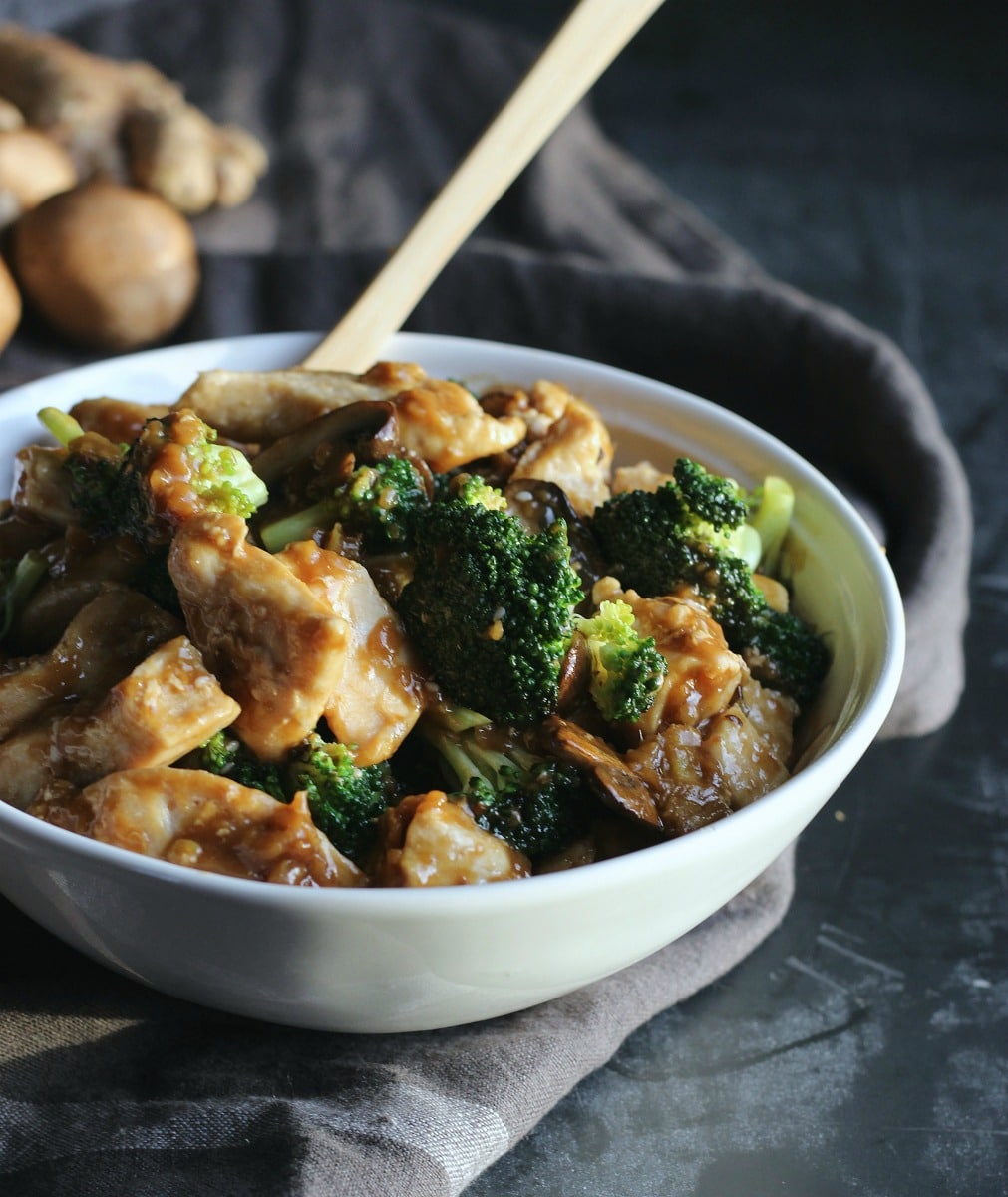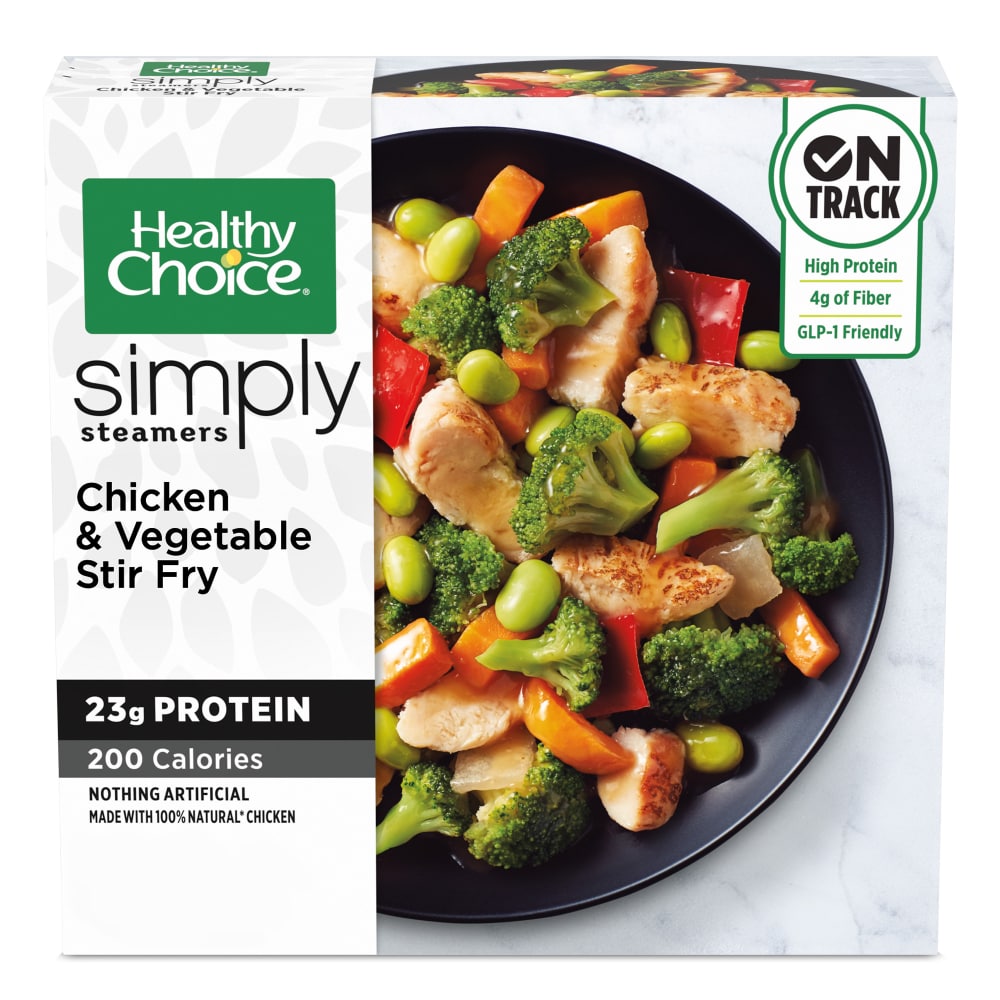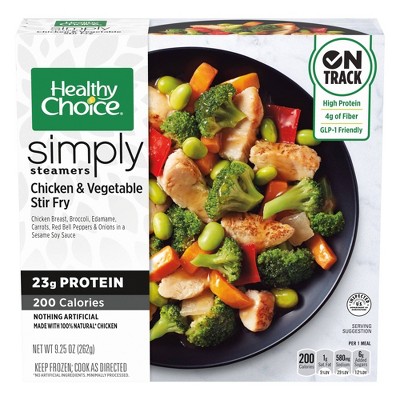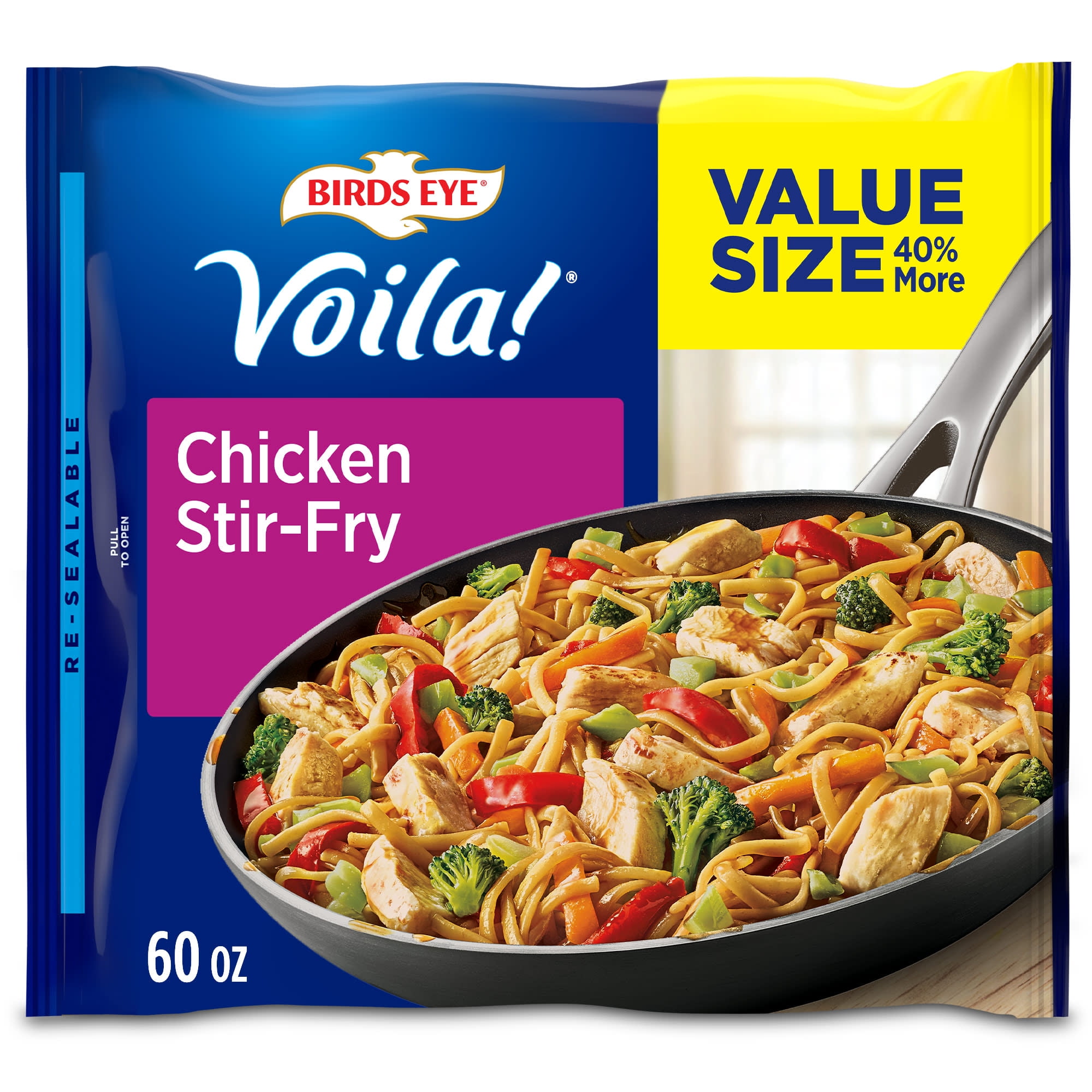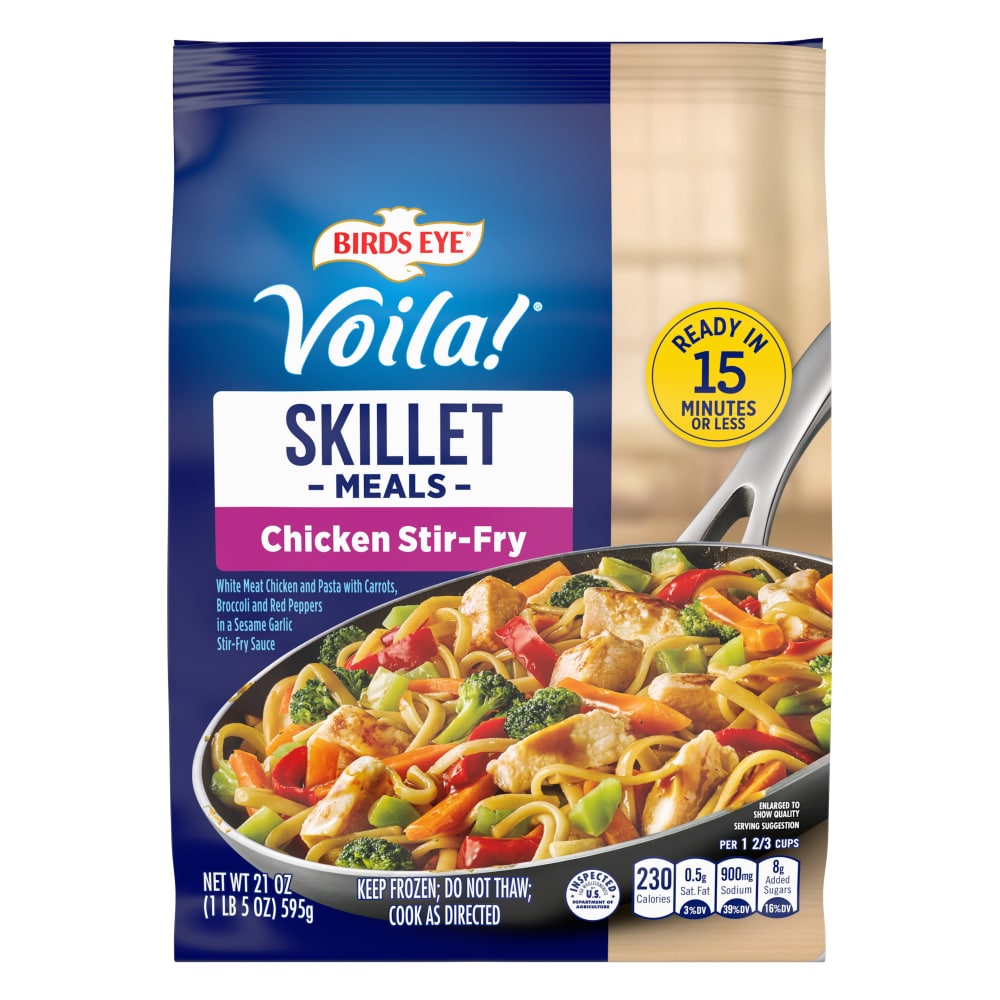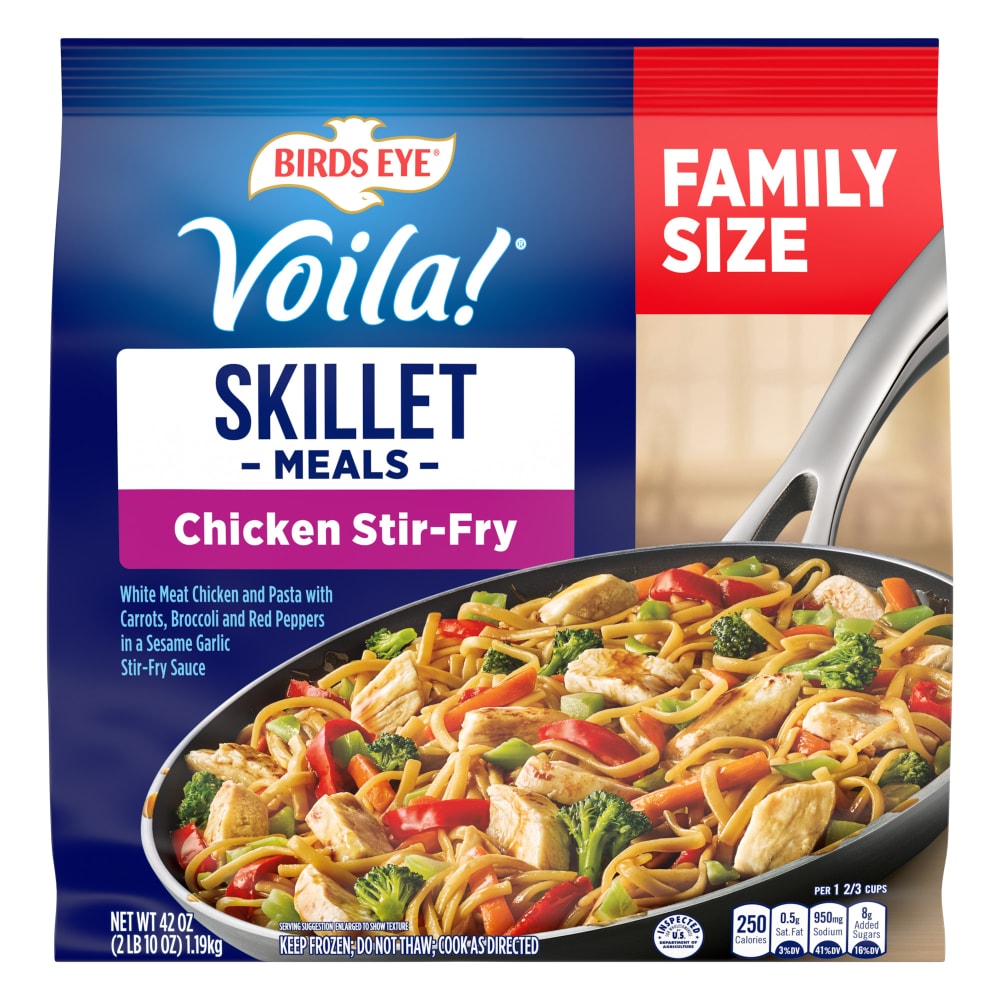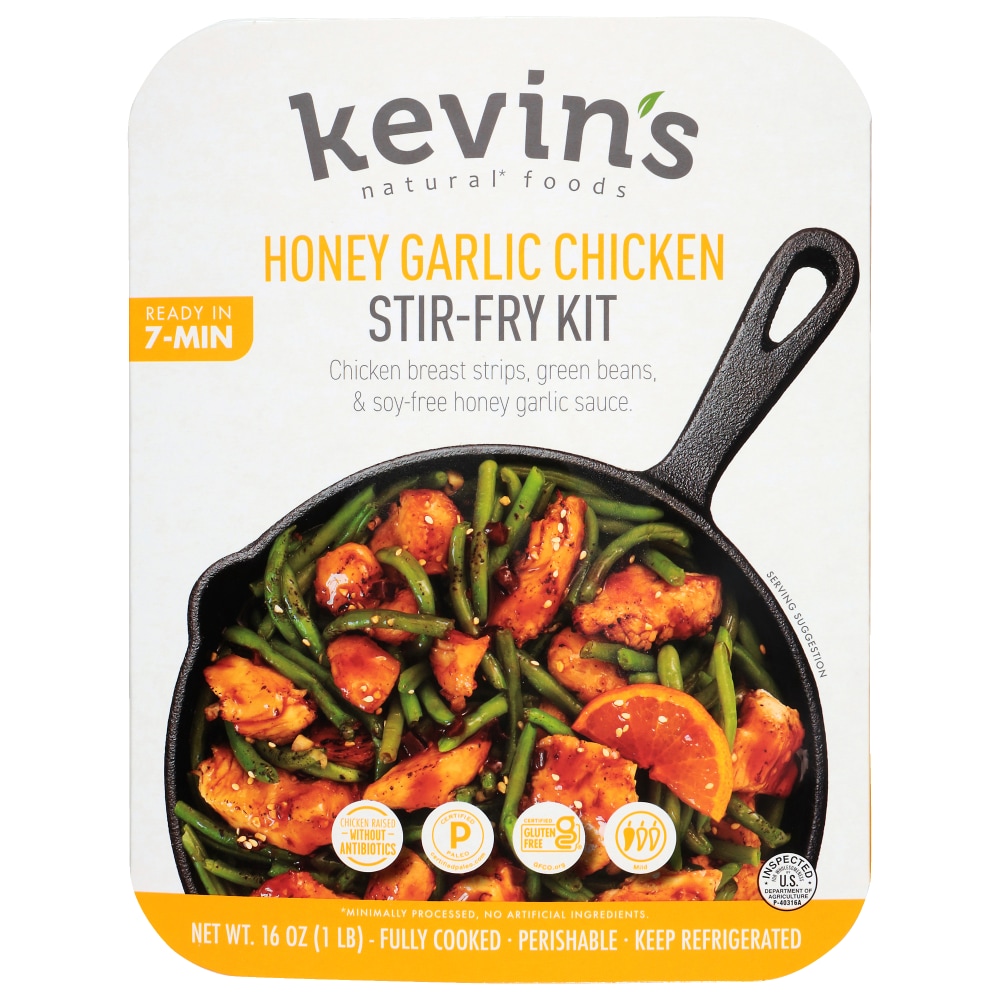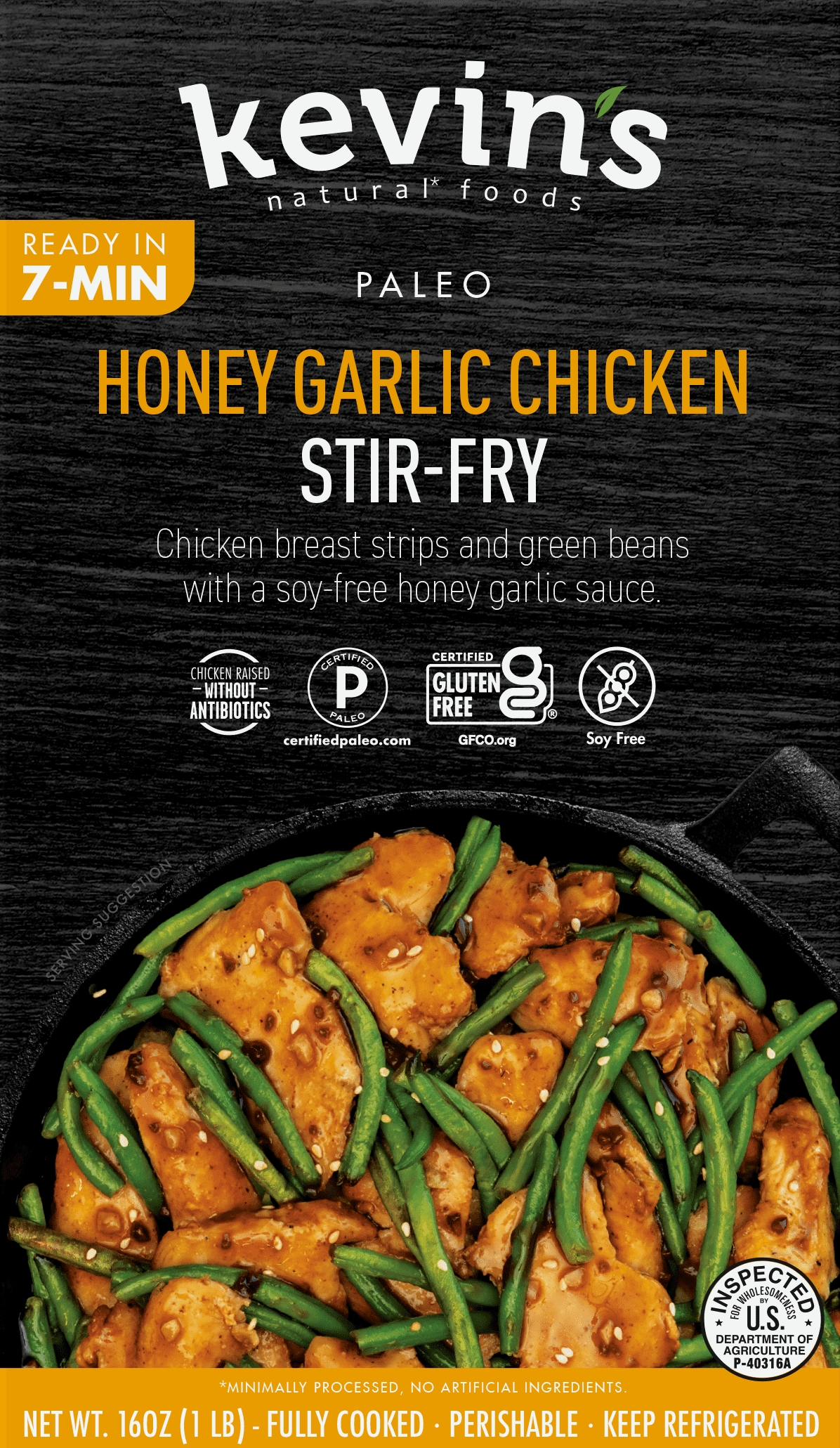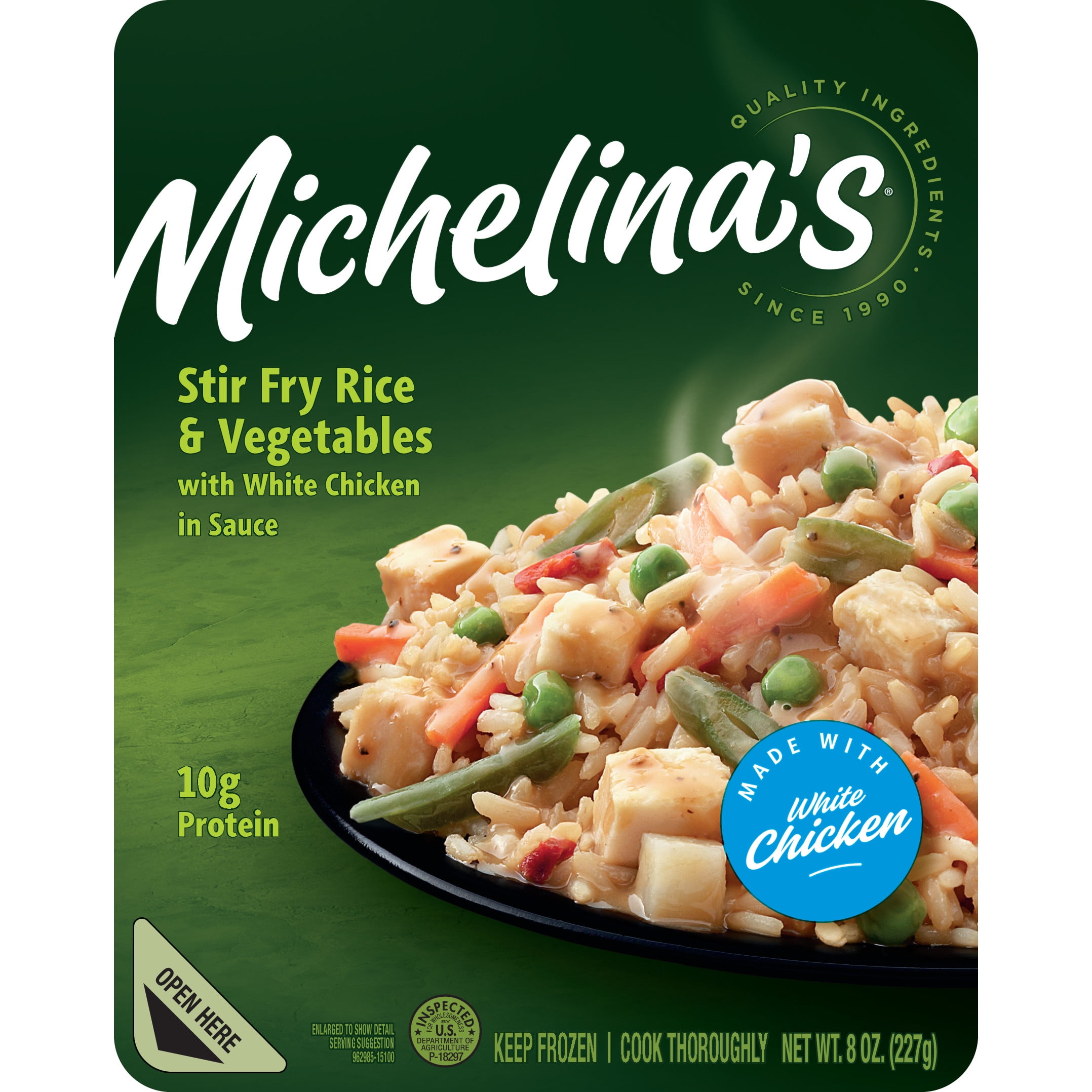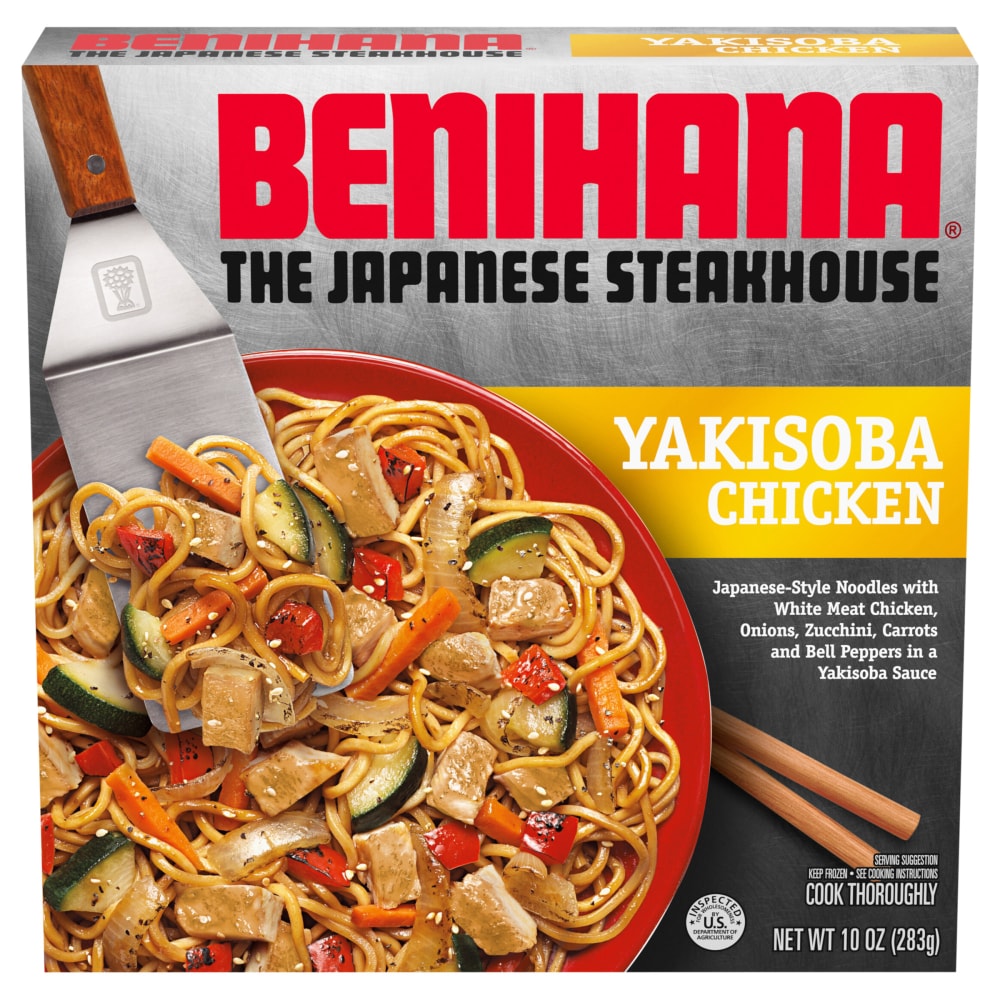Chicken Stir Fry
Chicken Stir Fry is a quick and nutritious meal option, loved for its amazing blend of flavors, variety in textures, and the health benefits it brings to the table. It typically involves stir-frying bite-sized pieces of chicken with an assortment of colorful and crunchy vegetables, all tossed in a savory sauce.
Recognized for its versatility, Chicken Stir Fry can easily be customized with your preferred choice of veggies, protein, and sauces. Whether served over rice, noodles, or enjoyed as a light meal on its own, this dish never fails to win over taste buds with its Asian-inspired flavors.
70%
CARBS
7%
FAT
23%
PROTEIN
Featured Articles
104 Chicken Stir Fry Products
Healthy Choice Simply Steamers Frozen Dinner, Chicken & Vegetable Stir Fry, 9.25 Ounce
Healthy Choice Simply Steamers Chicken & Vegetable Stir Fry Frozen Meal
Chicken Stir-Fry White Meat Chicken And Pasta With Carrots, Broccoli And Red Peppers In A Sesame Garlic Stir-Fry Sauce, Chicken Stir-Fry
Birds Eye Voila! Chicken Stir-Fry Skillet Frozen Meal
Chicken Stir-Fry White Meat Chicken And Pasta With Carrots, Broccoli And Red Peppers In A Sesame Garlic Stir-Fry Sauce Skillet Meals, Chicken Stir-Fry
Birds Eye Voila! Chicken Stir Fry Frozen Meal
Kevin's Natural Foods Honey Garlic Chicken Stir Fry Kit
Kevin's Natural Foods Honey Garlic Chicken Green Bean Stir-Fry, Fully Cooked Entree
Michelina's Stir Fry Rice & Vegetables with White Chicken
Benihana The Japanese Steakhouse Yakisoba Chicken Frozen Meal
39 Recipes for Chicken Stir Fry
2
Maple-Garlic Chicken Stir Fry
6
Sizzling Thai Basil Chicken Stir-fry
5
Zingy Ginger Chicken Stir-Fry
6
Tropical Teriyaki Chicken & Pineapple Stir-Fry
5
Savory Chicken and Red Pepper Stir-Fry
5
Sizzling Hunan Chicken Stir Fry
5
Lemony Chicken Stir Fry with Asparagus
2
Sweet & Savory Chicken Asparagus Stir-Fry
Chicken Stir Fry FAQ
What ingredients do I need to make Chicken Stir Fry?
How should I prepare the chicken for stir-frying?
What vegetables work well in a Chicken Stir Fry?
Can I use a wok to make Chicken Stir Fry?
What kind of oil should I use for stir frying?
How can I make my Chicken Stir Fry more flavorful?
Can I make a vegetarian version of Chicken Stir Fry?
How can I thicken my stir fry sauce?
How can I prevent my vegetables from becoming overcooked?
How should I store leftover Chicken Stir Fry?
Expiration & Storage Tips
When does Chicken Stir Fry expire?
Chicken Stir Fry, when freshly cooked, can be safely consumed within 3-4 days if stored properly in the refrigerator. Meanwhile, if it’s unopened, frozen chicken stir fry bought from the store can last up to three months. Once opened and refrigerated, aim to eat it within 1-2 days to ensure the vegetables and chicken are still of good quality. Lastly, if it’s homemade and frozen, it can last around 2-3 months in the freezer.
How do you tell if Chicken Stir Fry is bad?
To spot a bad chicken stir fry, firstly look for any change in color. Chicken that has gone off will have a greyish or dark color. If the stir fry has a sour or strong unpleasant smell, it indicates that it is spoiled. Vegetables should remain colorful and crisp; if they are mushy or discolored, it's a sign of spoiling. Finally, if the food tastes sour or off, don't eat it!
Tips for storing Chicken Stir Fry to extend shelf life
• Always place your chicken stir fry in an airtight container before storing it in the fridge or freezer, to avoid it absorbing other odors or becoming stale.
• When refrigerating, don’t put the hot stir fry directly in the fridge; allow it to cool down a bit at room temperature (not more than two hours), to avoid increasing the overall temperature of your fridge.
• If you choose to freeze your chicken stir fry, portion it into meal size amounts. This way, you only defrost what you need, and the rest can remain frozen, maintaining its quality.
• As for defrosting, it's best to plan ahead and let your stir fry defrost slowly by moving it from the freezer to the fridge. Quick defrosting methods can compromise the texture and taste of your stir fry.
Health Info
Macros
38g
CARBS
3g
FAT
12g
PROTEIN
Allowed on these diets
HIGH CALCIUM
LACTOSE FREE
Contains these allergens
SOYBEANS

